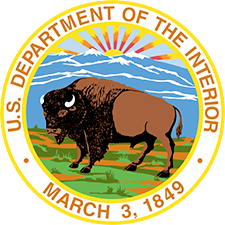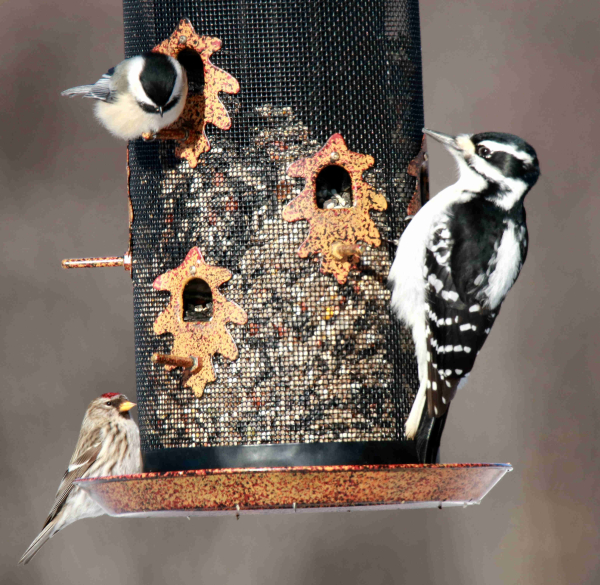Campsites or Cabins? Find Camping Variety on National Wildlife Refuges

Ready to fall asleep under a sky filled with stars? Raring to ditch the fast-moving, competitive world for unspoiled nature — at least for a few days?
Maybe now’s the time to get away, go camping and be captivated by the nation’s national wildlife refuges.
National wildlife refuges from Alaska to Florida offer camping opportunities that allow visitors to see wildlife up close in a variety of natural habitats.
The National Wildlife Refuge System, managed by the U.S. Fish and Wildlife Service, works to conserve America’s treasured wildlife species and their habitat, providing unparalleled outdoor recreational opportunities for all Americans.
Here’s a sampling of camping options:
Alaska
Kenai National Wildlife Refuge
Want to pack a tent into the wilderness? Rather stay in your RV? Kenai Refuge has it all. The refuge has more than 120 RV and tent sites. Free camping is available year-round in the Skilak area and on Swanson and Swan Lake roads. You can reserve one of the refuge’s 14 cabins, or you can try your luck for one of the two cabins available on a first-come, first-served basis.
Tetlin National Wildlife Refuge
The refuge has two campgrounds along the Alaska Highway that open once roads are cleared of snow (usually in April). The campgrounds stay open until late autumn, usually October, while roads are still passable. Cabins are available year-round when they are not being used by staff for management activities. Contact the refuge office at 907-883-5312 to get a permit to stay no more than 14 consecutive days. A lottery system has been instituted for the fall moose hunting season (generally late August to mid-September) when demand is especially high.
Georgia
Okefenokee National Wildlife Refuge
Paddling the beautiful and mysterious swamp of Okefenokee Refuge, a protected wilderness area, is the experience of a lifetime. Alligators glide through tea-colored water. Herons and egrets wade through tall grasses and water lilies. Bears roam through hammocks and islands. You can reserve one of the seven overnight shelters available in the swamp’s interior. Make reservations at least two weeks in advance by calling 912-496-3331 Monday-Friday, 7-10 a.m. Eastern Time. Learn about permit requirements on Recreation.gov.
Piedmont National Wildlife Refuge
In central Georgia about 25 miles north of Macon, the refuge allows camping and open fires in designated campgrounds, but only in conjunction with its big game and turkey hunts. The refuge will also allow Scout groups to camp when they are working on a service project that is not planned during hunting season.
Florida
St. Marks National Wildlife Refuge
Hikers can apply to use one of the primitive camp sites available every eight miles along the 49.5-mile segment of the Florida National Scenic Trail, which passes through two designated wilderness areas. But there’s a catch: Hikers must be committed to hiking the entire refuge segment of the trail, which goes through a greater variety of forest and wildlife habitat than any other north Florida section of the trail. The trail follows a series of dikes built to provide freshwater for the thousands of waterfowl that winter here. Hikers can also see osprey, otter, turkey, alligators, fox squirrels and more than 300 species of birds; 98 species nest on St. Marks Refuge.
Illinois
Crab Orchard National Wildlife Refuge
Oak-hickory forest covers more than half of the 44,000-acre refuge while 20 percent is open water. Here you can find hiking trails; at least six nesting pairs of bald eagles, best seen in winter; the elusive bobcat; and a thriving population of wild turkey. Summer is the perfect time to see and hear songbirds, while autumn brings large numbers of white-tailed deer. Four campgrounds on the refuge, including Crab Orchard Campground, are open April 1-October 31; upgrades have been made to the electrical and sewer systems, and grills are available.
Maine/ New Hampshire
Umbagog National Wildlife Refuge
Spanning northern New Hampshire and into western Maine, the refuge hasextensive wetlands that are key for waterfowl. In 1972, part of the wetlands at Harper’s Meadow was designated as a Floating Island National Natural Landmark. Shoreline campsites, operated by the State of New Hampshire, are available.
Montana
Red Rock Lakes National Wildlife Refuge
Get ready for spectacular scenery in remote wilderness. By mid-July, birds are busy attending to their chicks, and wildflowers are abloom. Trumpeter swans stay year-round, while the aspen and willow trees turn golden in autumn. The refuge maintains two primitive campgrounds, with no electricity at either. The Lower Lake Campground has toilets, picnic tables and fire rings and is the best place to see water birds. Both campsites are available for a minimal fee on first-come, first-served basis.
Nevada
Desert National Wildlife Refuge
Fee-free camping may be the best way to enjoy this 1.6-million-acre oasis in southern Nevada. The refuge, encompassing six major mountain ranges, teems with wildlife, including more than 500 plant species. Although the land has been home to people for thousands of years, the habitat is largely unchanged. Look for collared lizards sunning on rocks, some of the 320 species of birds, or the tracks of the elusive mountain lion. Here are some tips for seeing desert bighorn sheep. Six primitive camp sites are available on a first-come, first-served basis. Each site has a picnic table, fire ring and tent pad, and vault toilets are available. Bring your own water.
Oklahoma
Wichita Mountains Wildlife Refuge
Known for its reintroduction of bison, elk and wild turkey and some of the finest rock climbing in the area, the refuge gives you a choice of camping options. For group reservations at campsites, contact the visitor center at 580-429-3222.
Doris Campground is a modern camping facility with individual and group sites, available on a first-come, first-served basis.
Fawn Creek Campground is reserved for organized youth groups, including through the university level.
Backcountry camping is available in the Charons Garden Wilderness Area.
Washington
Willapa National Wildlife Refuge
Established in 1937 to protect migrating birds, the refuge has grown to encompass diverse ecosystems like salt marsh, forest, freshwater wetlands, streams, grasslands, coastal dunes and beaches. And the birds? More than 200 species nest, rest or winter here. Chum salmon, Roosevelt elk and more than a dozen amphibian species also find a home here. You can find five primitive campgrounds with a total of 20 campsites, offered on a first-come, first-served basis. Each campsite includes a picnic table, fire ring and access to a toilet.
The U.S. Fish and Wildlife Service works with others to conserve, protect and enhance fish, wildlife, plants and their habitats for the continuing benefit of the American people. For more information, visit www.fws.gov, or connect with us through any of these social media channels: Facebook, Twitter, YouTube and Flickr.






